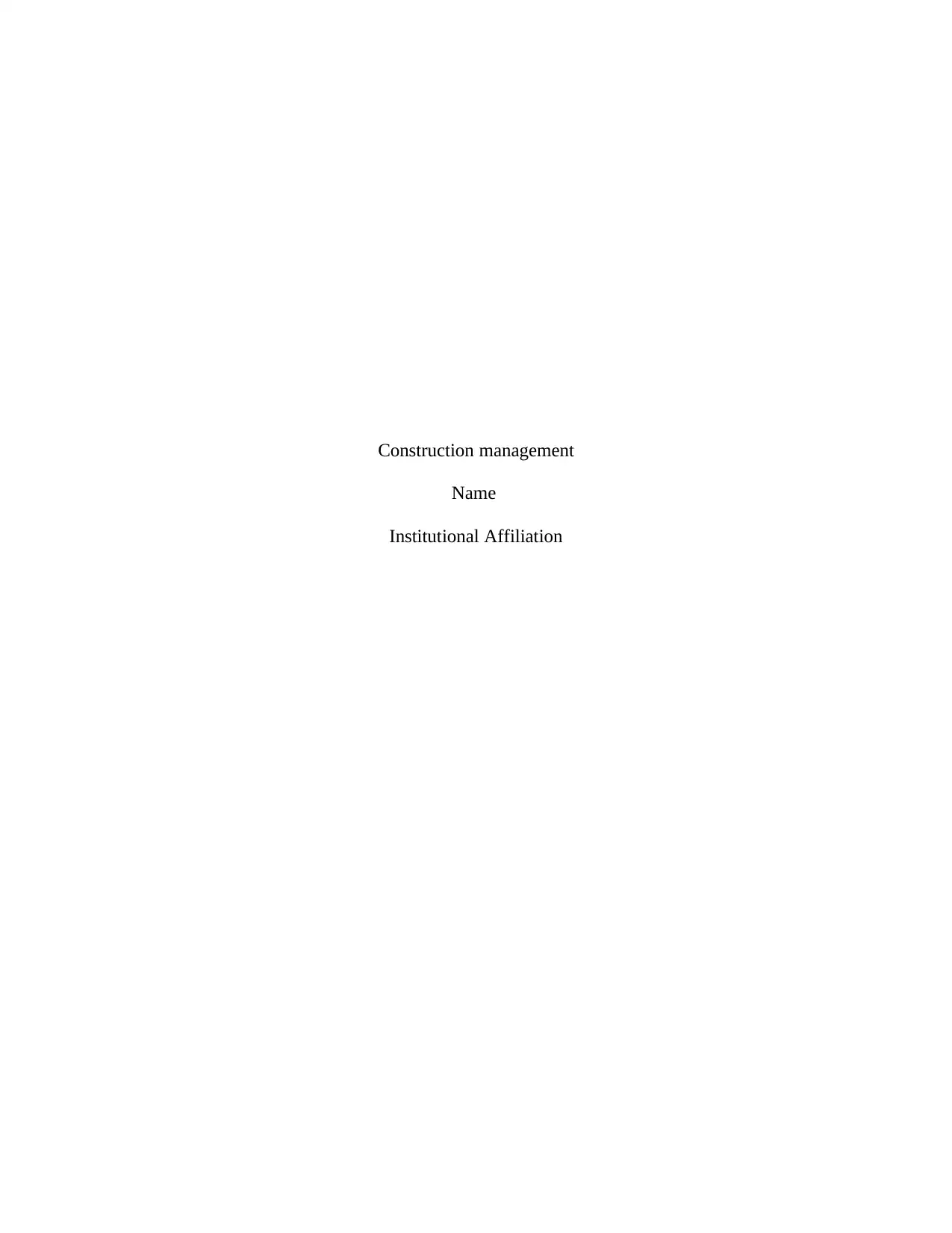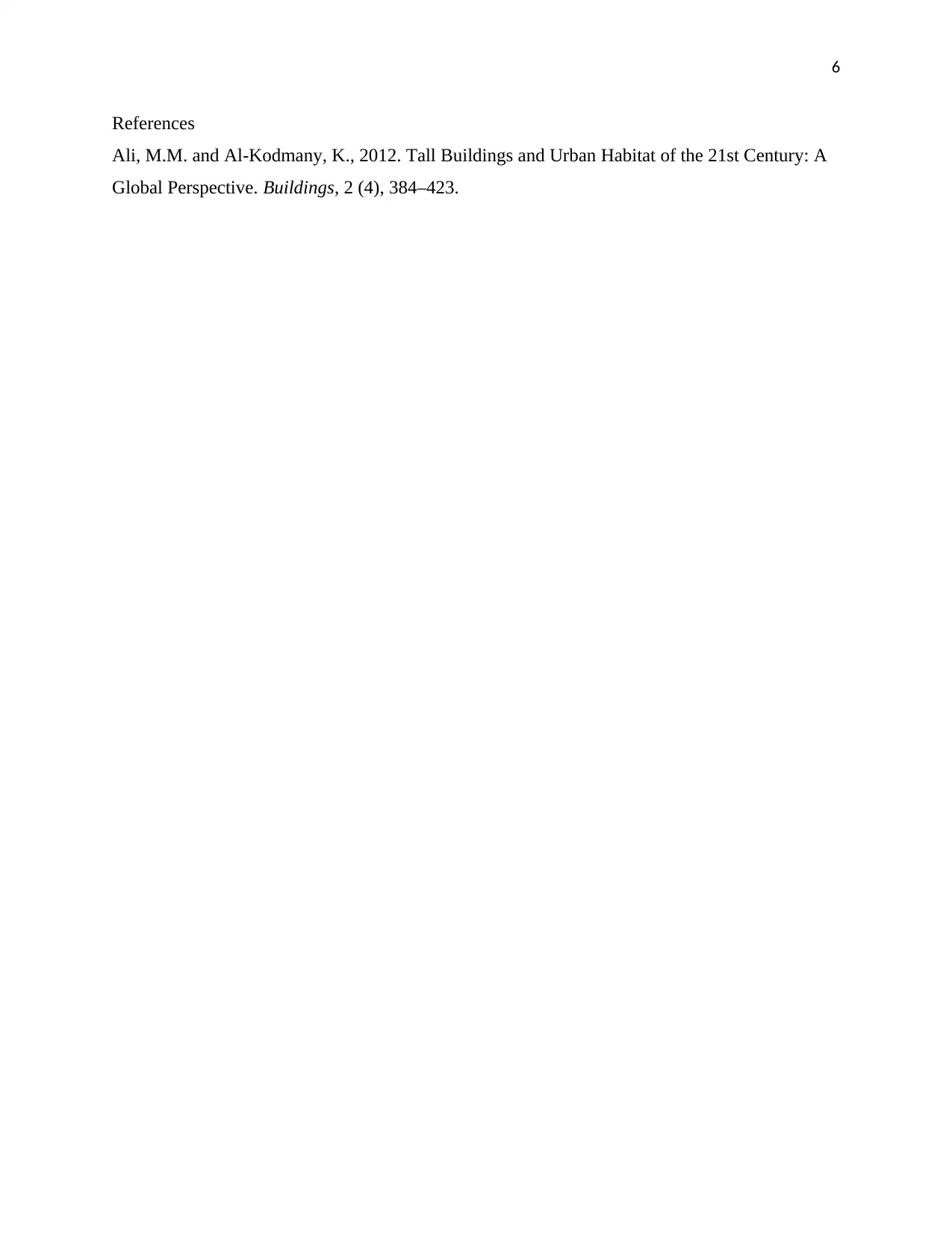Tall Building Construction: Stability, Forces, & Structural Elements
VerifiedAdded on 2023/06/03
|6
|986
|143
Report
AI Summary
This report provides a comprehensive overview of tall building construction, focusing on the structural aspects. It begins by defining what constitutes a tall building and differentiating it from regular structures. The report then delves into the principles of achieving a stable structure, explaining the roles of loads, forces, and material properties, detailing dead load, live load, and wind load calculations, and illustrating various forces acting on the building. The significance of material type and shape in building stability is emphasized, followed by a discussion of key structural members like beams, slabs, and columns, outlining their respective functions in supporting the building. Furthermore, the report touches on basement structure construction and the steps involved in dewatering, including well installation and water removal techniques. The document concludes with references to relevant academic sources, particularly emphasizing the global perspective on tall buildings and urban habitats in the 21st century.
1 out of 6












![[object Object]](/_next/static/media/star-bottom.7253800d.svg)